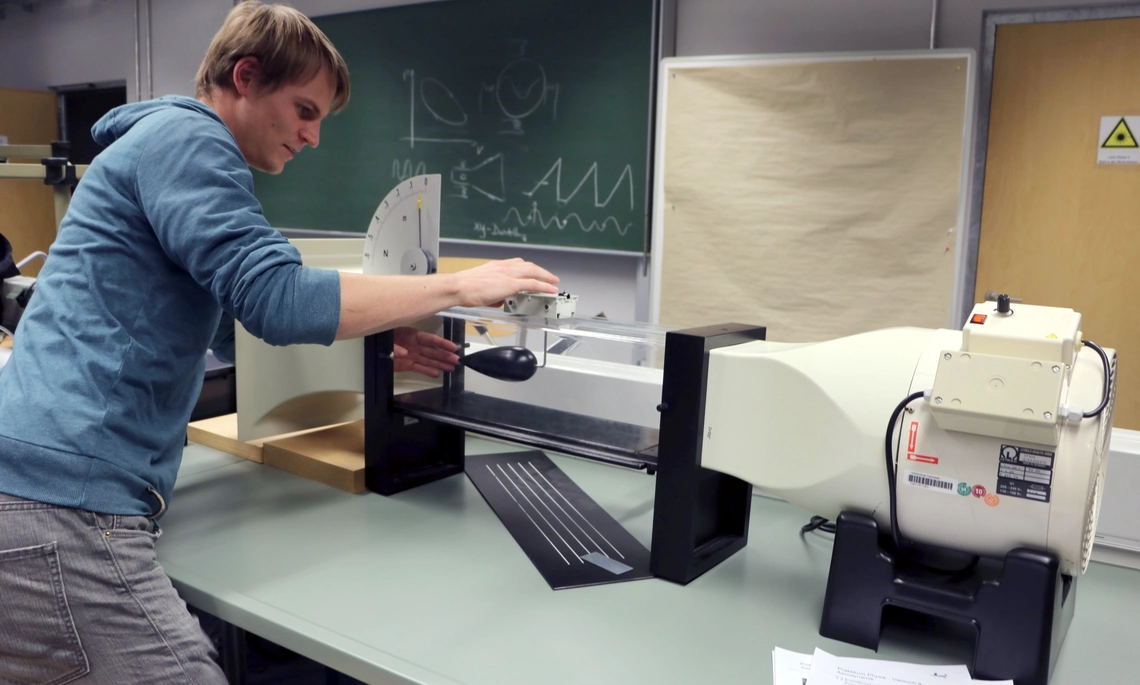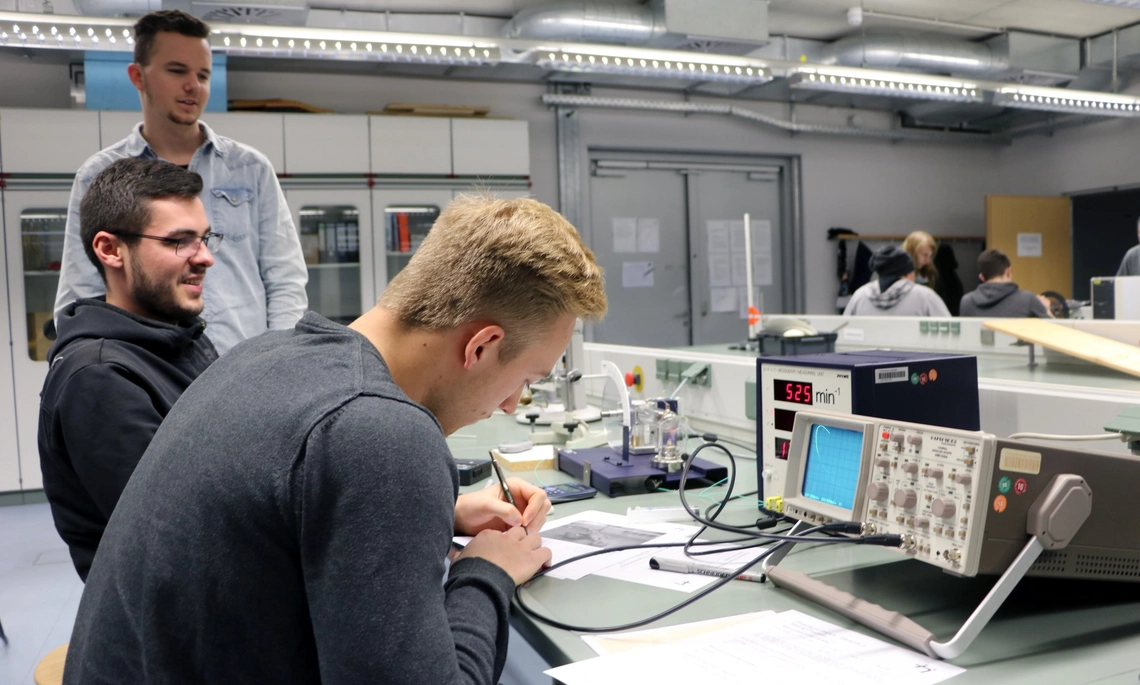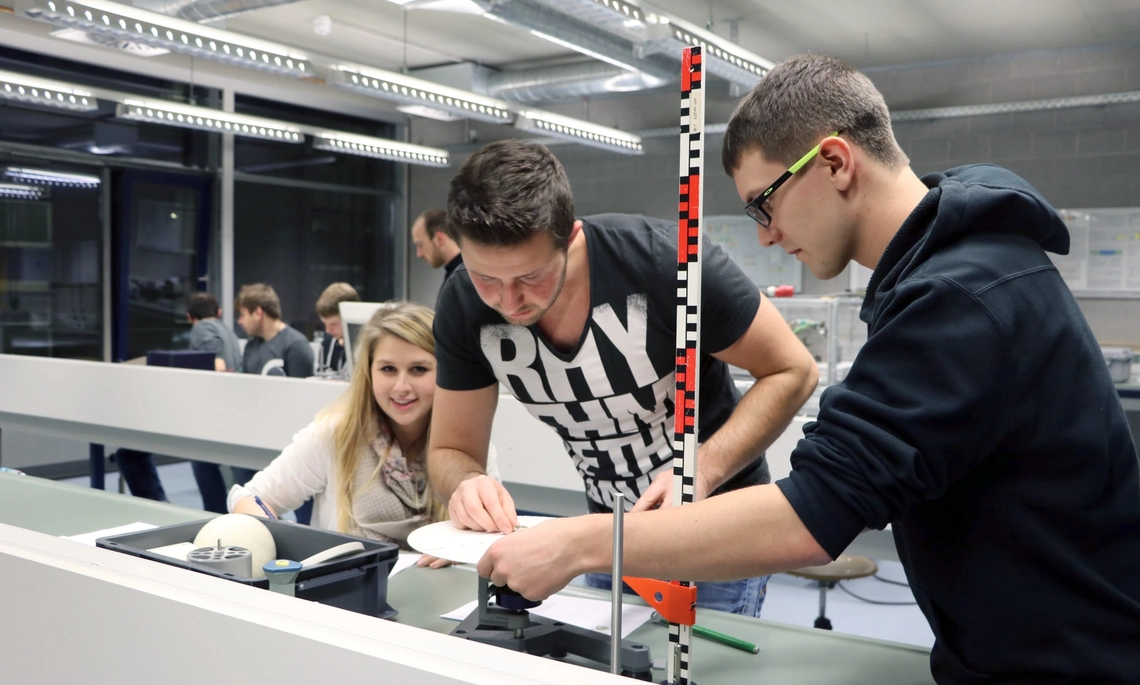The Laboratory of Physics imparts the physical basics of engineering science by means of meaningful experimental setups that provide valid quantitative measurement results. The focus is on kinematics, dynamics, vibration theory, fluid mechanics, thermodynamics, acoustics and optics. The laboratory has a separate laser protection area (room C208) where experiments with laser radiation are carried out.
Goals and idea
Physical connections are made accessible through clear examples from practice. The laws taught in the lecture can be applied directly. The laws of nature can be directly experienced.
- Investigation of linear and rotary movements
- Analysis of systems capable of vibrating including their resonance catastrophe
- Quantification of drag and lift forces
- Performance determination of thermodynamic cycles
- Detection of the propagation behaviour of sound waves
- Optical length measurement
- Representation of optical diffraction phenomena
- Characterization of photometric quantities of illuminants
Laboratory equipment and software
Equipment and function
- Roller track with electronic evaluation
- Torsion measuring station for determining moments of inertia
- Pohl wheel for vibration measurement with external excitation
- Wind tunnel
- Stirling engine
- Kundt's pipe for acoustic analysis
- Michelson Interferometer
- Mach-Zehnder interferometer
- Optical bench for diffraction studies on laser beams
- Spectrophotometer MAS40 for colour and luminance measurement of illuminants
- Integrating spheres and light measuring adapters for radiometry and photometry
- Goniophotometer for measuring the radiation characteristics of illuminants
- Fully automatic measuring system for temperature characterization of LEDs
- Lab-View for measurement data acquisition
- SpecWin Pro for spectral analysis of light measurement data
- LumiCam for two-dimensional color and luminance analysis
Courses
Practical trainings accompanying the lectures:
- Physics
- Applied physics
- Modern lighting and display technology
Research
- Lifetime tests of COB-LED
News from the lab
Recently, the THI has been equipped with a 250 mm diameter integrating sphere, which is calibrated to luminous flux together with the MAS40 spectrometer. A Peltier cooler, which is controlled by the SpecWin Pro spectrometer software, and a measuring current source enable fully automatic recording of temperature profiles of LEDs up to a diameter of 75 mm. The data is automatically generated and stored for a freely configurable measurement sequence.
Laboratory management and team
Prof. Dr.-Ing. Daniel Navarro Gevers
Phone: +49 841 9348-2761
Room: A115
E-Mail: Daniel.NavarroGevers@thi.de
Phone: +49 841 9348-2761
Room: A115
E-Mail: Daniel.NavarroGevers@thi.de










![[Translate to English:] Logo Akkreditierungsrat: Systemakkreditiert](/fileadmin/_processed_/2/8/csm_AR-Siegel_Systemakkreditierung_bc4ea3377d.webp)








![[Translate to English:] Logo IHK Ausbildungsbetrieb 2023](/fileadmin/_processed_/6/0/csm_IHK_Ausbildungsbetrieb_digital_2023_6850f47537.webp)


